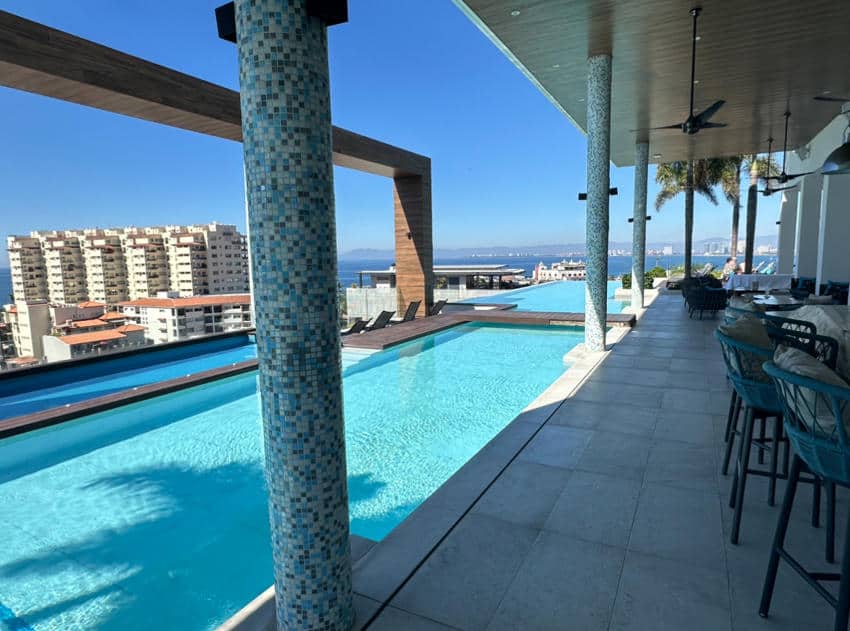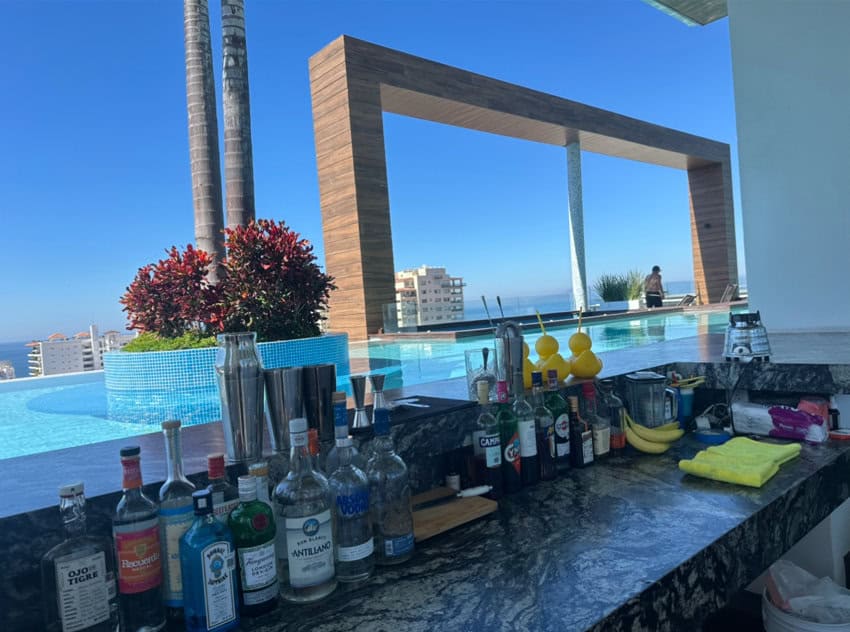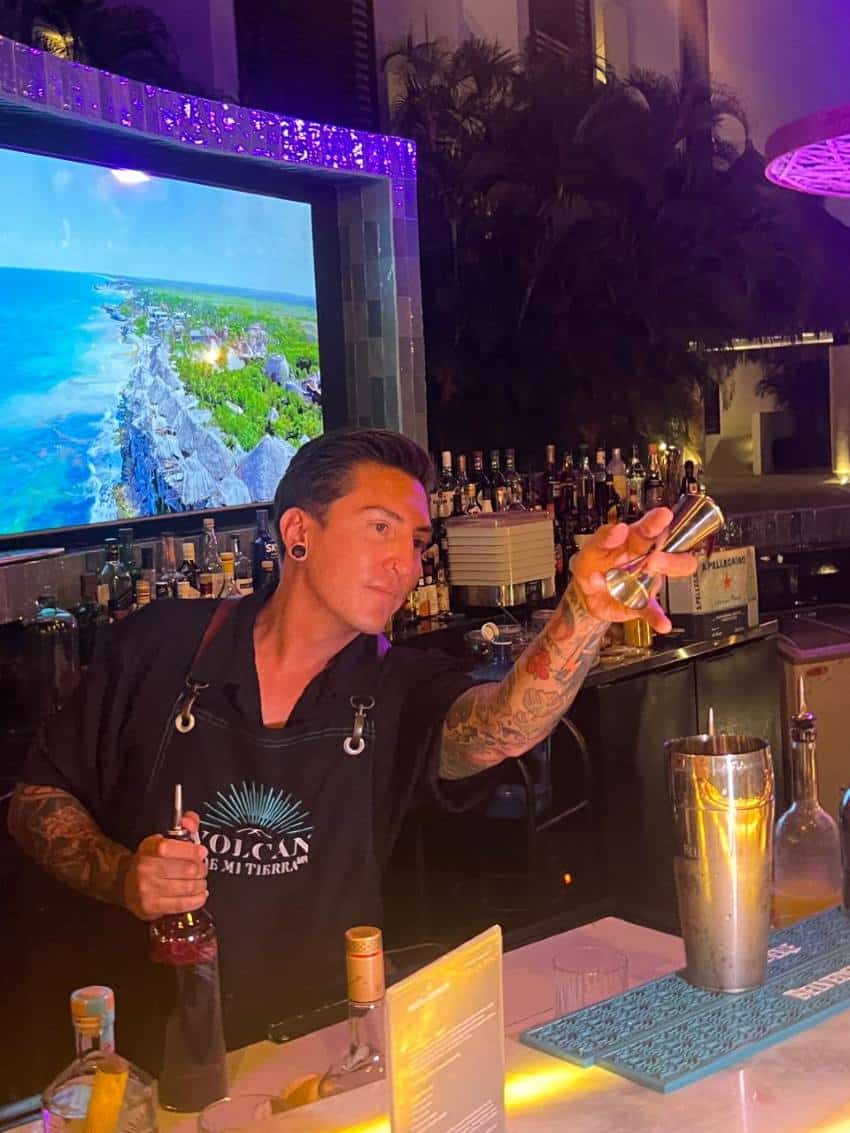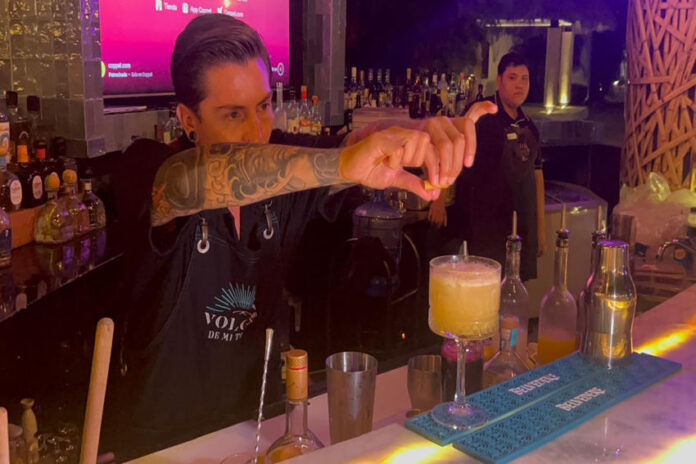When Ulises Quijano first came to Puerto Vallarta from León, Guanajuato, he had no long-term plans.
“Most of my friends kept talking about this place called Puerto Vallarta,” he says. “I had never been, never even thought about coming. I just figured I’d try it out for three months.”

Twelve years later, he’s still here — and he’s built a career that’s become part of the fabric of the city’s ever-evolving social and culinary scene.
“It was probably the best decision I’ve ever made,” Quijano says.
Back then, Quijano was a novice bartender with basic English and a curiosity about cocktails. Today he’s the founder and creative force behind Deseo Rooftop PV, a speakeasy-inspired pool bar in the heart of Puerto Vallarta’s Zona Romántica, where cocktails are crafted with local fruits, homemade syrups and a philosophy that drinks should be “balanced, natural and made with love — the way I’d want someone to make one for me,” Quijano says.
Same soul, new skyline
Puerto Vallarta may have changed dramatically in the past decade, but in Quijano’s eyes, much of its essence remains the same.
“For me, it’s pretty much the same,” he says. “New buildings, sure. But the same vibe. Friendly people, amazing food, great hospitality.”
A video with a collection of photos illustrating the transformation Puerto Vallarta has gone through as it has evolved into a major tourism destination.
Still, he does miss Puerto Vallarta’s slower days, he admits. “When beach towns felt like beach towns. Smaller restaurants, quieter mornings,” he says.
Growth here has led to increased tourism, a surge in new condominium development and a significant influx of digital nomads and expatriates.
The state of Jalisco has US $1 billion slated for development projects planned over the next few years, including ones in Puerto Vallarta, the Costalegre and Guadalajara. With an airport expansion on the horizon, there are no signs of Puerto Vallarta slowing down.
Quijano sees both sides of the boom.
“It’s good and bad. Good because it helps the economy and brings new experiences to Vallarta. But it’s made living here more expensive too. Some of the magic gets lost when places start catering only to visitors.”
From learning to leading
Quijano’s first job in Vallarta was behind the bar at 116 Pulpito, a cozy neighborhood spot in the Zona Romántica. But he quickly set his sights on learning more. He found his way into the Italian favorite Tre Piatti, a fine-dining restaurant where he studied Mediterranean cuisine, wine and advanced mixology.
That training paid off. In 2018, he was named a national finalist in the Ophir World Adventure Cocktail Competition, placing in the top 10 in Mexico.
His first stab at entrepreneurship came shortly afterward, partnering to open a restaurant that lasted a few months. But it was enough to light a spark.
“I realized I wanted something of my own. I wanted to create a space where I could express myself, play the music I love, tell stories through cocktails,” Quijano says.
Deseo Rooftop PV is that space. It’s a place that marries chill rooftop vibes with sophisticated, ingredient-driven drinks. It’s also an outlet for Ulises to share not only his creativity but his values.

“The most rewarding part has been the freedom. My time, my mental health, my ability to create. And being part of a community that supports local vision.”
The real Vallarta
Ask Ulises where the “real” Puerto Vallarta lives, and he doesn’t hesitate.
“Any neighborhood where people actually live. Where there’s still community.”
Neighborhoods like Cinco de Diciembre, Barrio Santa María, Versalles, Fluvial and Independencia are all neighborhoods relatively close to downtown that are full of local businesses, life and culture, he says.
When he needs a break from the busier downtown core, he heads north to San Pancho or to hidden beaches like Mayto or Las Gemelas.
His favorite local eats? You’ll find him at Don Chava or Carboncito Sahuayo, or having tacos at Aurora and Sonoritas.
A city at a crossroads
Despite his love for Vallarta, Ulises is candid about its growing pains. Infrastructure hasn’t kept pace with development. The laid-back fishing village vibe has made way for luxury towers and traffic jams.
“It’s not a small town anymore,” he says. “The charm is still there. You feel it in the people and in little corners of the city. But it’s not as easy to find.”

If he could change one thing about how Vallarta is growing, it would be the decreasing spirit of collaboration he sees.
“I wish we were more open to being a real community again,” he says. “Helping each other, sharing ideas, creating more together. More local events, more collaboration, less competition.”
For Quijano, Puerto Vallarta’s next chapter could be just as energetic as the last 12 years, as long as it doesn’t forget its roots.
And for now, you can find him mixing up stories and sipping sunsets on a rooftop above the Zona Romántica.
Meagan Drillinger is a New York native who has spent the past 15 years traveling around and writing about Mexico. While she’s on the road for assignments most of the time, Puerto Vallarta is her home base. Follow her travels on Instagram at @drillinjourneys or through her blog at drillinjourneys.com.
